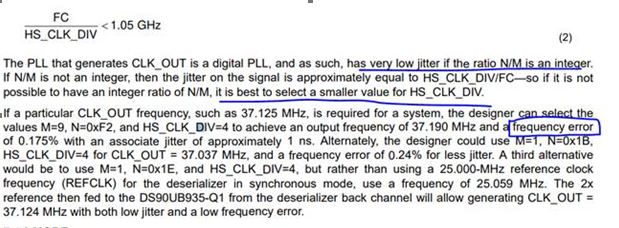Other Parts Discussed in Thread: DS90UB953-Q1EVM
Hi team,
my customer use Non-Sync-external clock mode.
they want CLK_OUT=24MHz, and CLKIN is integer. you can see the following can meet this:

according to our DS, it seems the Frequency error is 0. so i want to check if there are any differences among CLK_IN=32Mhz,36Mhz,48Mhz, which one do you prefer? thanks


